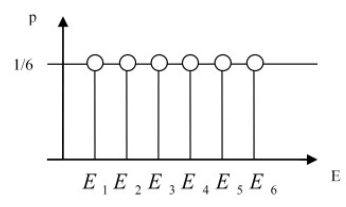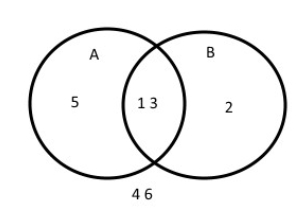This is an old revision of the document!
Statistical properties
The outcome of experiments, the results of observations and the status of the systems form a so-called 'event space', where finite or infinite cardinality elementary events may occur.
These events may form sets. Because of the fact that these events can be sets we may perform set operations with them.When these operations occur, the event will carry information.
From everyday experience the news value of these events can be very different.
For example, if somebody says to me that I five of my numbers are drawn at the lottery, the information will be much more valuable to me than if somebody says that only one of my numbers have been drawn.
While observing the outcomes of these events we may get to a conclusion that certain events show some kind of stability in their frequency.
In the \( E_i \) event space, an event happened \(k_i\) times then the frequency of that given event may be calculated with the following formula:
\(g_i=\frac{k_i}{k} \)
This means that we divide the number of all events by the number (frequency) of that given event. In case of a large number of experiments this number will show us the probability of that event.
$$ \lim_{k \to \infty} g_i = \frac{k_i}{k} = P(E_i) $$
- if \(k_i = k \), then the occurrence will be certain \(P(E) = 1 \)
- if \(k_i = 0 \), then the occurrence will be impossible \(P(E) = 0 \)
The event's \(𝐸\) probability \(p(E)\) will be the occurrence's probability.
If we take the six-sided dice for our probability test the following will occur:
The probability of every event will be 1/6 which can be calculated with the following formula. The rolls (of the dice) will form a so-called full event system. In the case of a full event system the sum of the probabilities (of each event) is 1 by definition.
If one the events happen then the others can not happen:
$$ \sum_{i=1}^{n} p(E_i) = 1 \text{ where } E_i \cap E_j = 0 \text{ and } i \not = j $$
This formula applies to a set of mutually exclusive events. Since these events are disjoint (no overlap between any two different events) and together they cover all possible outcomes (the sum of their probabilities is 1).
Sum of events
What is the sum of two different events' probability?
For example what is the probability that we throw an odd number (with a dice) (Event A) and a number less then 4 (Event B)?
If A and B event would not have common events (so that they would exclude each other) the formula would be the following: \( p(A \cup B) = p(A) + p(B) \).
We can only form a general formula, if we extract the probability of the intersection of both sets from the total sum:
$$ p(A \cap B) = p(A) + p(B) - p(A \cup B) $$
So we can say that (according to this formula) the total probability for both events is 4/6.


